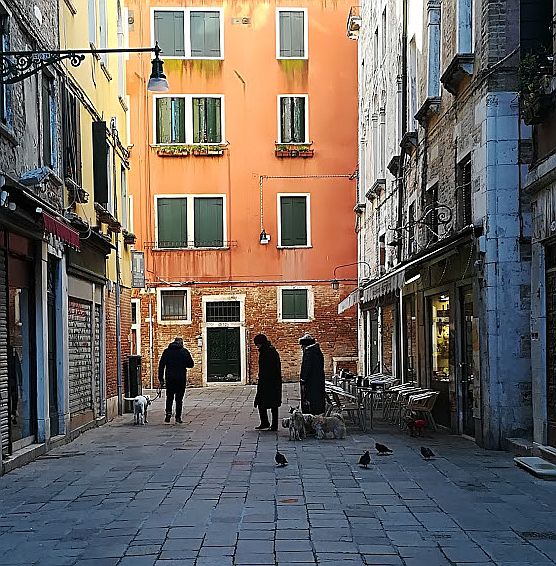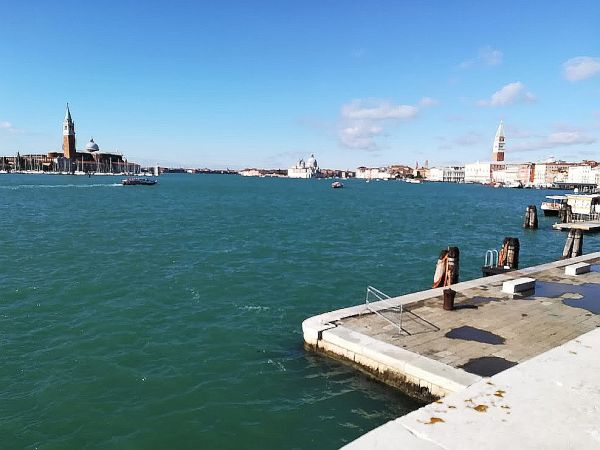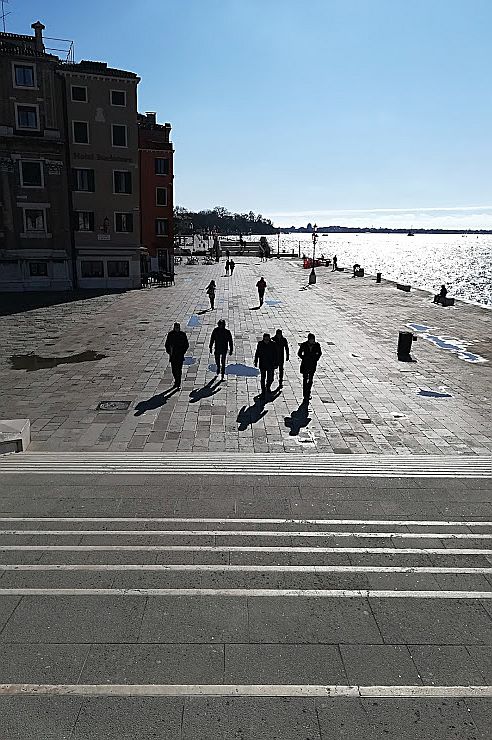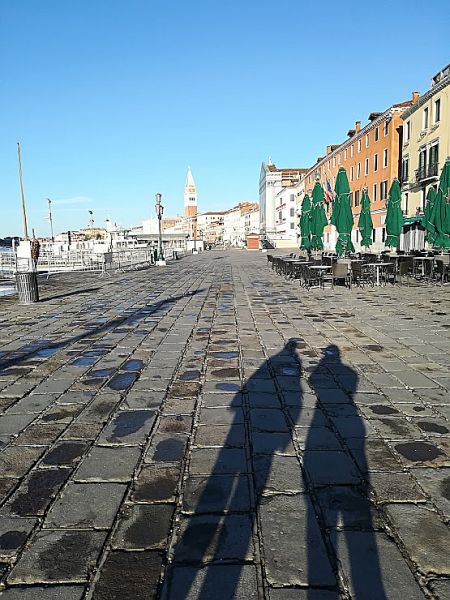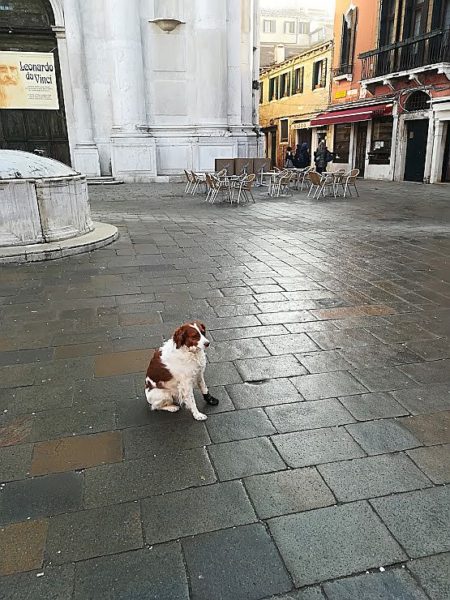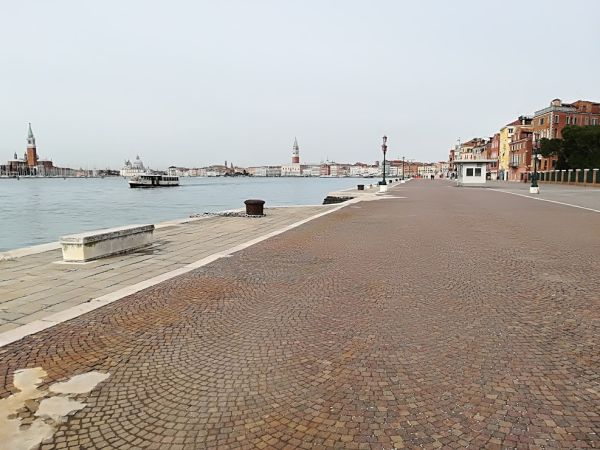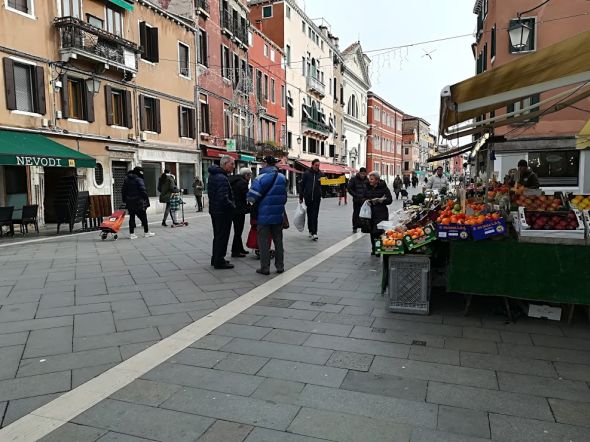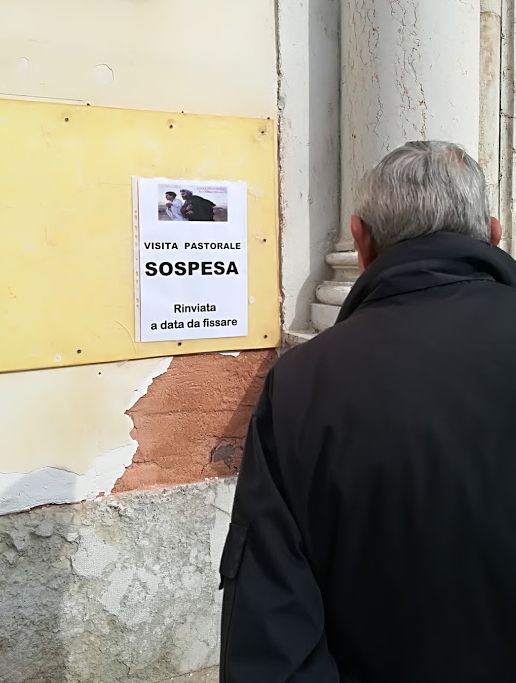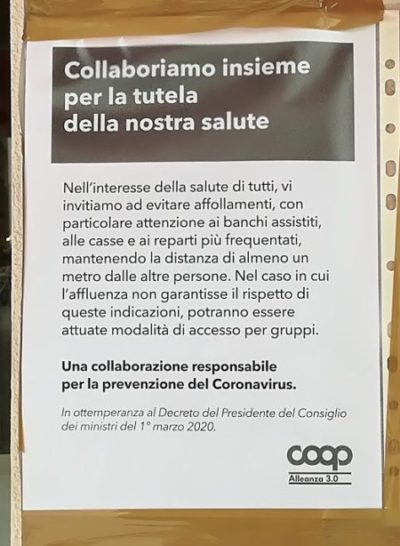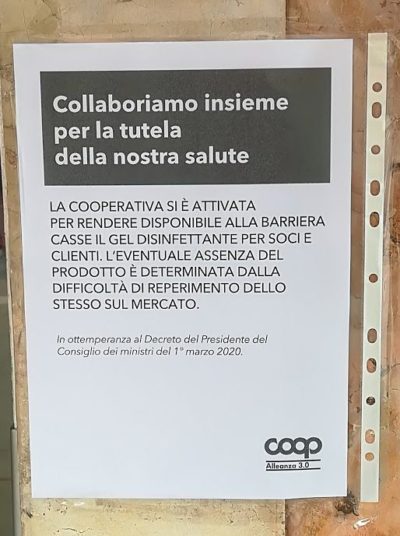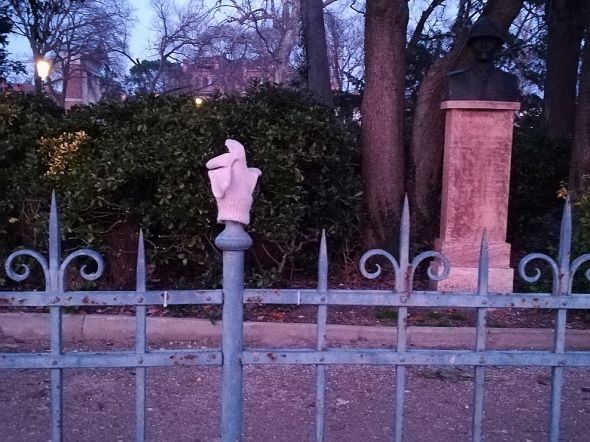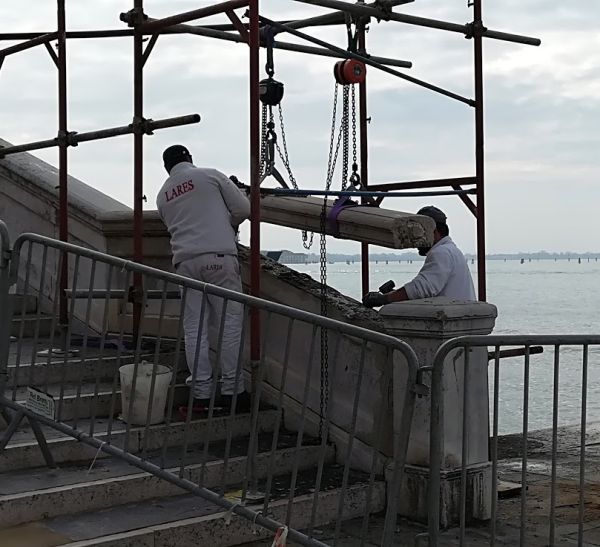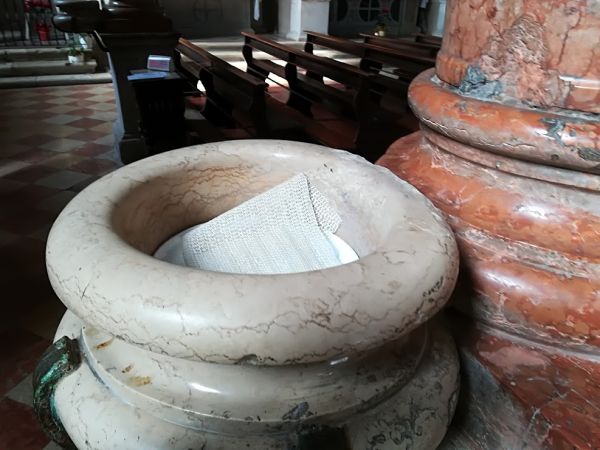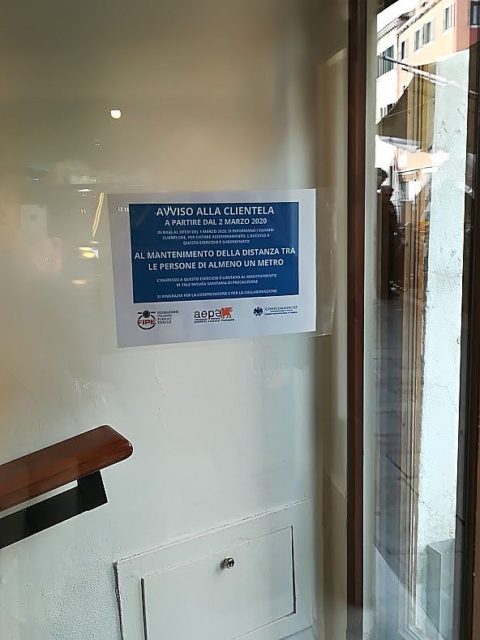


Greetings from the Red Zone.
People in Venice are in the grip of coronavirus, everybody in the world knows that by now. Toddlers in Kiribati must know that. But what does that mean, apart from the basic epidemiological definition? Well, every day it means something new, and today I realize it means living by a long list of rules, regulations, decrees and ordinances. Or maybe it’s not a LONG list, but just the same list repeated in more ways and in more public places.
Residents of Venice are now prohibited from entering or leaving the city, except for extremely valid and precisely defined and not-to-be-negotiated reasons. If the police stop and ask you what you think you’re doing by heading toward or away from Venice, you’d better have a really good answer ready. No more eyelash-batting, “The dog ate my blood test report,” “Gee Officer Krupke” replies. There is now an official document to fill out to justify your movements, and if you don’t have a copy with you, the police will furnish one. And sign it.
This is the self-certification form. The towns are listed, as you see, and you must state where you are coming from and where you’re going, and check the box (or boxes?) that apply to your situation: Demonstrable work demands; situations of necessity; health reasons; returning home (or as they so thoroughly specify: domicile, habitation, or residence).
But that’s only the thin end of the iceberg, as a friend once put it. Here is the list of “Don’ts” (and a few equally stringent “do’s”) for us plodding neighborhood denizens:
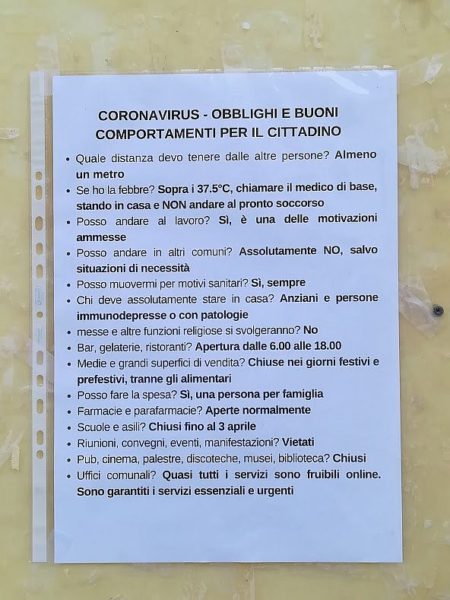
What distance must I keep from other people? At least one meter.
What if I have a fever? Above 37.5 degrees C (99.5 degrees F), call your family doctor, remain at home and do NOT go to the Emergency Room.
Can I go to work? Yes, it is one of the permitted activities.
Can I go other communes (communities)? Absolutely NOT, save for situations of necessity.
Can I move around for health reasons? (This implies medical appointments, tests, therapies, etc.) Yes, always.
Who absolutely must remain at home? The elderly and those with compromised immune systems or pathologies.
Will mass and other religious functions be conducted? No.
Bars, ice cream shops, restaurants? Opening between 6:00 and 18.00.
Medium-sized and large shopping areas? Closed on festive and pre-festive days (note: in a normal week, this means Sunday and Saturday, respectively; if there is a holiday, such as Christmas, that falls on a weekday, that day is categorized as “festive,” and the preceding day would be the “pre-festive”) except for food stores.
Can I go shopping? Yes, one person per family.
Pharmacies and parapharmacies? Open as usual.
Schools and nurseries? Closed till April 3.
Meetings, conventions, events, manifestations (this could be a sports competition, or a political demonstration, or many other public activities that involve groups): Forbidden.
Pubs, cinemas, gyms, discotheques, museums, library? Closed.
City offices? Almost all of their services are available online. Essential and urgent services are guaranteed.
In the same way that cutting the Biennale in half made me realize Things are Worse than I Thought, I had the same feeling when I just read that “Bars, pubs, and restaurants will be open from 6:00 AM to 6:00 PM” (1800 hours, as they write it here). The command “Stay at home” has been interpreted in all sorts of ways, but “Restaurants will close at 6:00 PM” is impossible to misunderstand. What’s going to be next — ration cards?
Every single one of these rules is there for a reason — I am not quibbling or complaining. It’s just that by the time you reach some kind of adult cruising altitude in life, you have prioritized a lot of the rules. You don’t put “Do not kill” on the same level in your mind as “Do not hang up on your mother,” or “Don’t go outside without sunscreen.” But these coronavirus rules are all on the same level, and it requires some effort to remember them.
If this goes on, they will undoubtedly become habit. That will be interesting.

- Wash your hands often with soap and water or alcohol-based gel.
- Avoid close contact with persons who suffer from acute respiratory infections.
- Don’t touch your eyes, nose and mouth with your hands.
- Cover your mouth and nose with one-use handkerchiefs (tissues) if you sneeze or cough. If you don’t have a tissue, use the inside of your elbow.
- Do not take any anti-viral or antibiotic medicine without your doctor’s prescription.
- Clean all surfaces with disinfectants based on chlorine or alcohol.
- Use a face mask only if you suspect you are sick or if you are helping sick persons.
- Products MADE IN CHINA and packages received from China are not dangerous.
- Pets do not spread the coronavirus.
- If in doubt, do not go to the Emergency Room, call your family doctor and follow his/her instructions.


